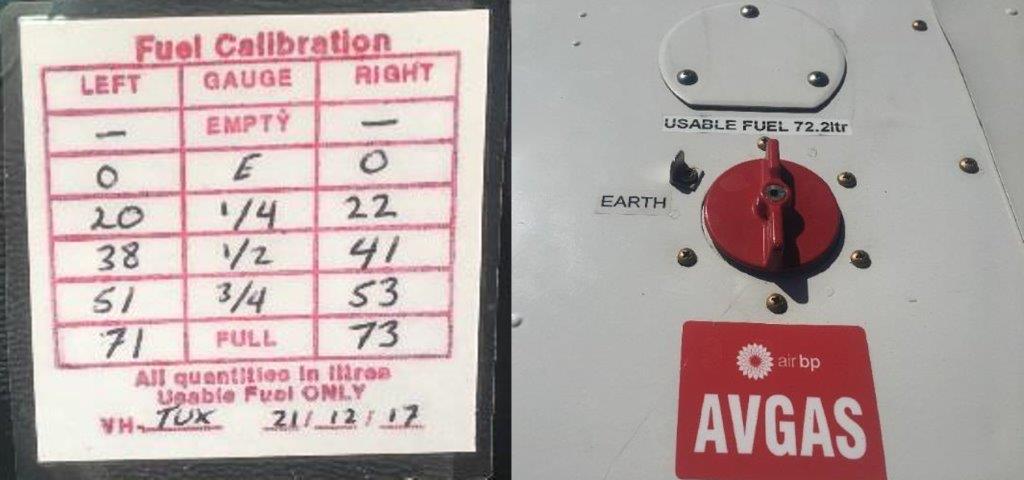The Australian Transport Safety Bureau (ATSB) has published yet another accident report on a tediously durable topic: fuel exhaustion. The accident involved a Cessna 172 on a fire-spotting flight which landed in scrub about 72 km southwest of Kalgoorlie, in WA, in January 2018 after its tanks ran dry. By a combination of good luck and good flying after the engine stopped, the two people on board were uninjured and the aircraft was only slightly damaged.
The aircraft had recently been returned to service after repairs from storm damage and had been fitted with new wings, with smaller fuel tanks holding 144 litres. The pilot did not know this and had not been made aware of it by the operator, although a new fuel tank calibration card had been fixed to the panel. The pilot had the aircraft filled to what he thought was its full 180-litre capacity, enough fuel, he thought, for a four-hour flight. (An internal investigation by the operator indicated the aircraft did not have the available fuel capacity, even if fitted with the original larger fuel tanks, to complete the intended flight with the operator‑required fixed fuel reserve of 45 minutes.)
During the flight the fuel gauges ran down, but the pilot stuck to his mental model of the fuel load and flight profile, and disregarded them. The engine stopped after 3 hours 38 minutes in the air.
The ATSB said the pilot’s experience from instructing student pilots on protocols for an engine restart and practice forced landings likely aided in managing workload during the emergency and led to the successful forced landing.
In 2013 the ATSB published Starved and exhausted: Fuel management aviation accidents as part of its Avoidable accidents series. Launching the publication, the then ATSB chief commissioner, Martin Dolan said, ‘many accidents involving fuel exhaustion and starvation are avoidable through good fuel management practices and procedures’.
Fuel starvation is when the aircraft has fuel, but it does not get to the engine; fuel exhaustion is when the aircraft uses all its fuel before landing.
The 2013 report has a list of steps to reduce the chance of fuel starvation and fuel exhaustion by:
- using more than one source of information to obtain consistent results about the fuel on board before flight
- using a consistent procedure that is regularly checked to know the exact rate of fuel consumption
- monitoring the flight to ensure that sufficient fuel will remain on board in the event of unplanned delays.
Fuel starvation usually happens when the selected tank is run dry. In addition to the factors relevant to fuel exhaustion, the chance of starvation can be further reduced by:
- ensuring the pilot is fully familiar with the operation of the fuel system for both normal and abnormal operations
- adhering to pre-flight procedures and checks to ensure the correct tank is selected before take-off and landing
- using a fuel log during flight to provide a record of the fuel usage from each tank
- selecting the appropriate tank before descending to the destination and ensuring that tank has adequate fuel for landing.
For more detailed information on how to avoid an embarrassed silence in the sky pilots and operators can read CASA’s Civil Aviation Advisory Publication 234-1(2): Guidelines for aircraft fuel requirements






Comments are closed.